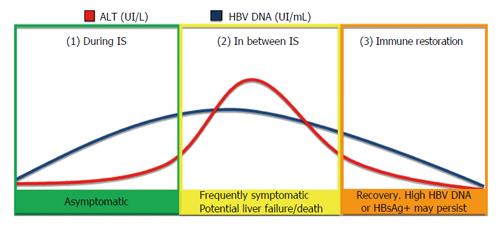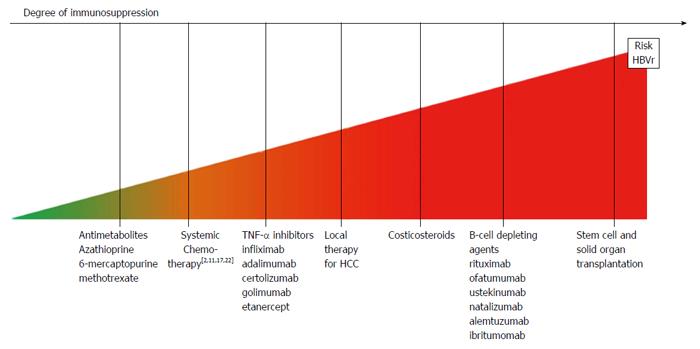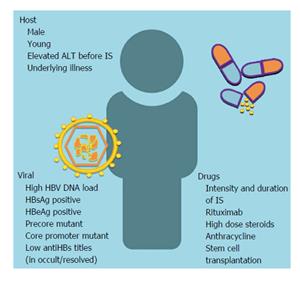Copyright
©The Author(s) 2016.
World J Hepatol. Mar 18, 2016; 8(8): 385-394
Published online Mar 18, 2016. doi: 10.4254/wjh.v8.i8.385
Published online Mar 18, 2016. doi: 10.4254/wjh.v8.i8.385
Figure 1 Hepatitis B reactivation phases.
In the initial phase, there is an increase in HBV DNA levels, usually with an asymptomatic evolution. In the second phase, both ALT and HBV DNA are elevated; symptoms are frequently present, and they may be severe. The third phase is determined by resolution, although HBsAg (if reappeared), or elevated HBV DNA, may persist[3,17,55]. IS: Immunosuppression; HBV: Hepatitis B virus; ALT: Alanine aminotransferase; HBsAg: Hepatitis B surface antigen.
Figure 2 Immunosuppressing agents and related risk of hepatitis B reactivation.
HCC: Hepatocellular carcinoma; TNF-α: Tumor necrosis factor-α; HBVr: Hepatitis B virus reactivation.
- Citation: Bessone F, Dirchwolf M. Management of hepatitis B reactivation in immunosuppressed patients: An update on current recommendations. World J Hepatol 2016; 8(8): 385-394
- URL: https://www.wjgnet.com/1948-5182/full/v8/i8/385.htm
- DOI: https://dx.doi.org/10.4254/wjh.v8.i8.385











